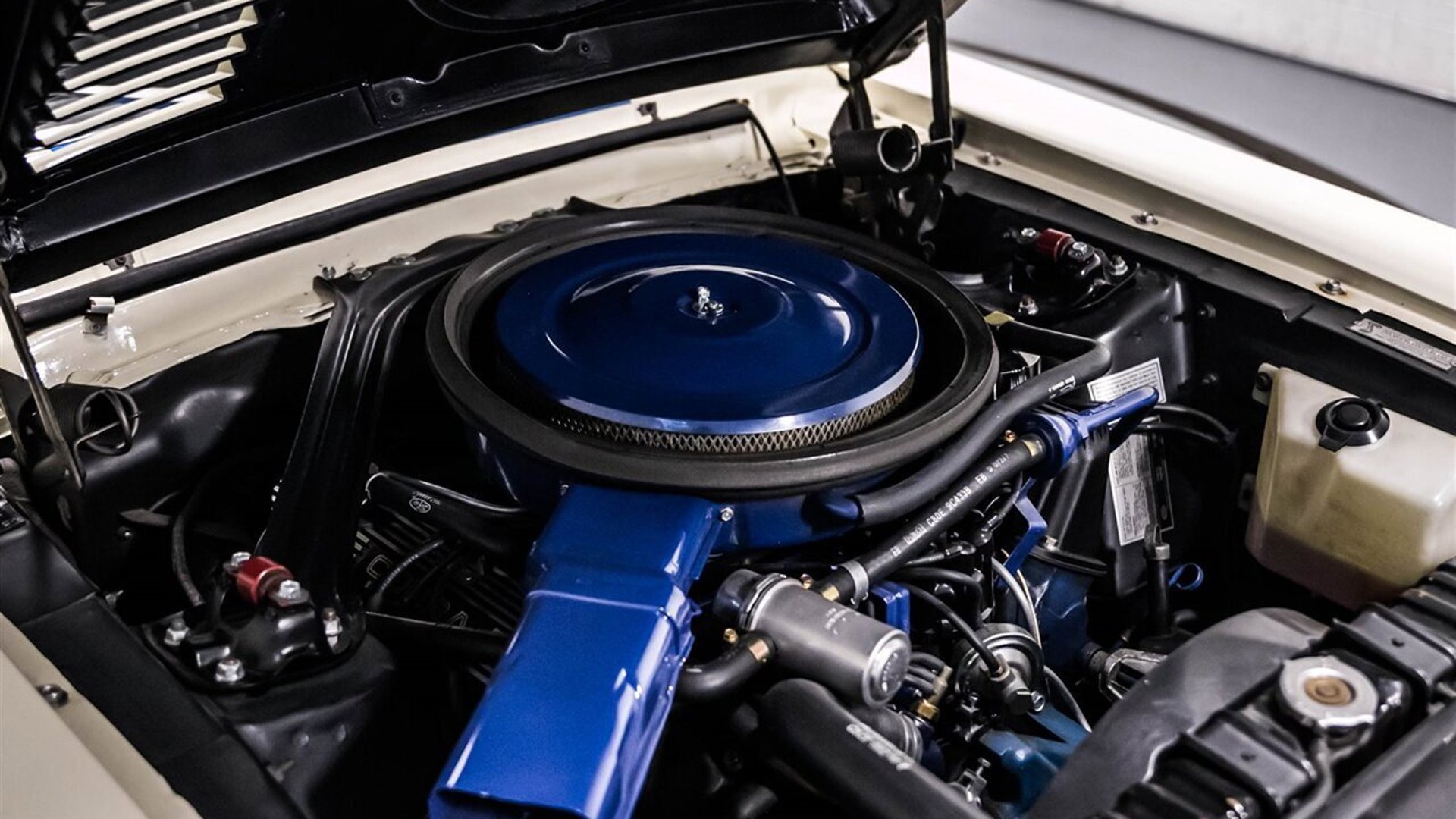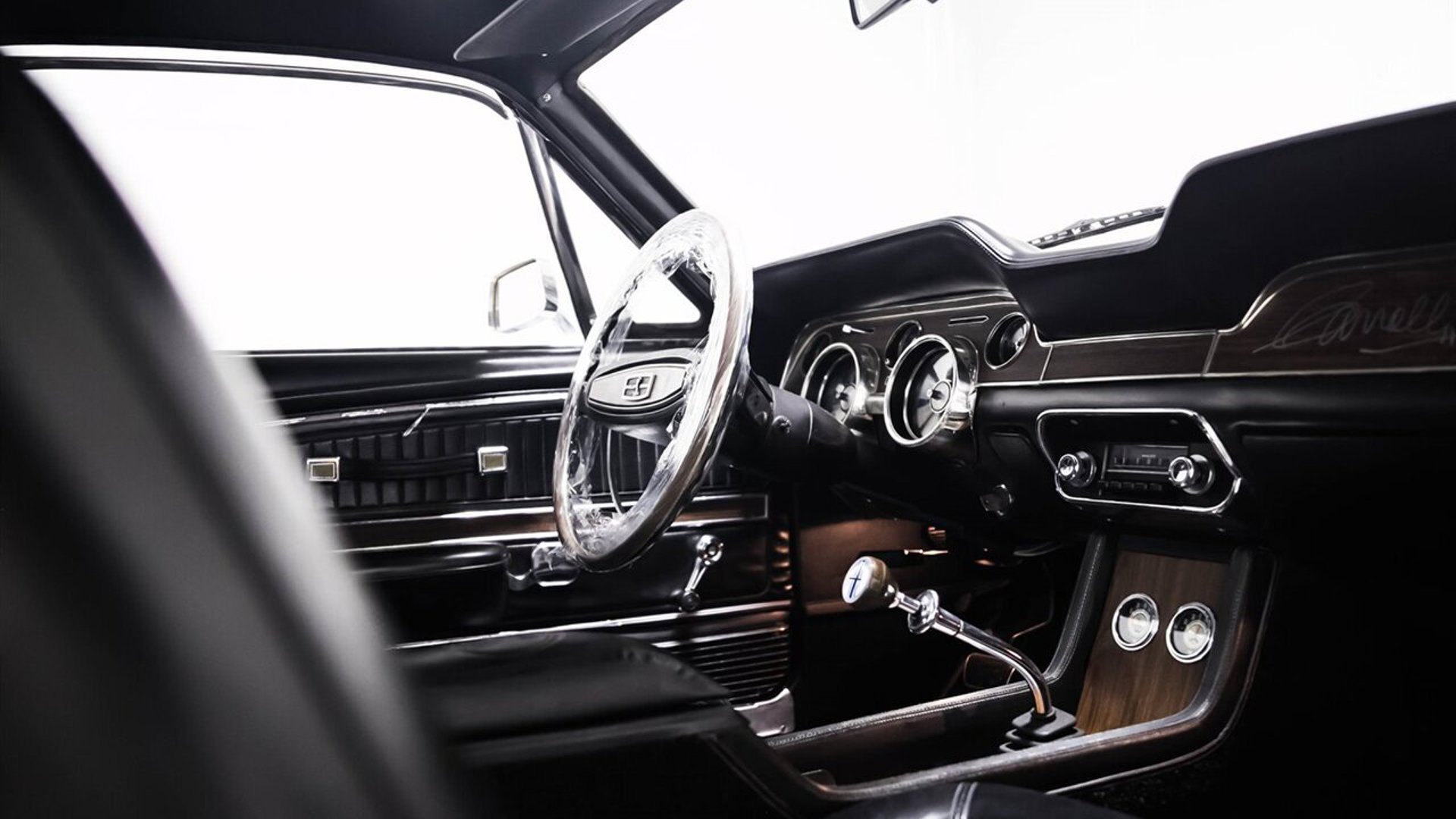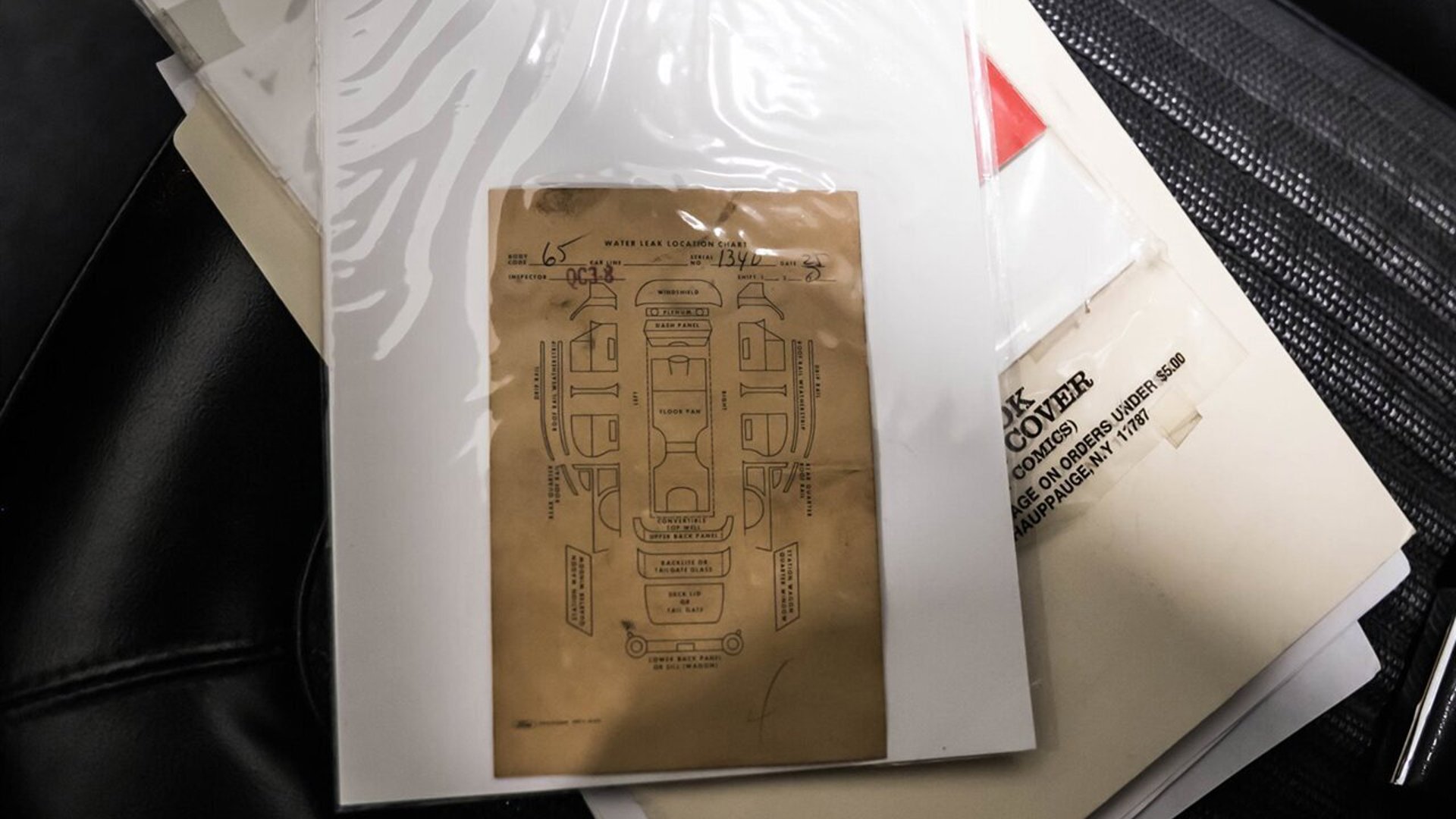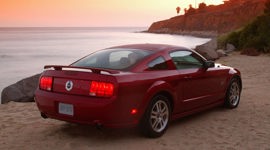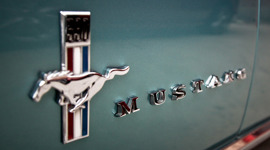Photos by Platinum Cars
The enduring appeal of a Shelby Mustang goes beyond the sum of its parts.
The expectation is that when you interact with a Shelby Mustang, particularly an example of the most iconic iterations from the mid-to-late 1960s, you’re experiencing a small piece of history.
When you think of a Shelby Mustang, you might call to mind a black and gold ’66 GT350-H and the tall tales of roll cages being hastily wielded in for weekends of track abuse and then removed before returned to Hertz. Or maybe you think about a dusty ’67 dark blue GT500 lost somewhere in the desert, abandoned by a certain wayward rock star.
Almost certainly though, when you think of a Shelby, you think about racing. You picture Wimbledon white with the iconic Le Mans blue stripes. You think about grille-mounted Lucas fog lights, a four-speed manual transmission, and a big-block Cobra Jet engine under the hood. You’re imagining that infamous double bubble Mustang dash and, on the passenger side, the unmistakable signature of the late Caroll Shelby.

Then there’s the more folklore stuff, like how original Shelby GT500 owners would blow up their 428 engines in the ’60s, only to force Ford to replace them with the preferred 427. Others say you could order one with the 427. Others say the 427 was only available for the first bit of 1967 while GT500s were still assembled by Shelby America and not Ford corporate. Tales of these factory race engine GT500s circulate like legends of a 25-foot great white shark.
And as folklore goes, the 1968 GT500KR, perhaps the most corporate and controlled of all of Carroll Shelby’s efforts with Ford in the ’60s, has as much as any of its ilk.
There is, of course, the legend that Caroll Shelby himself would tell stories about calling the patent office in a frenzy to scoop the “King of the Road” moniker out from under Corvette. You can’t help but feel a little warm and fuzzy with that one.

The ’68 KR is much more interesting than a clever marketing ploy, however. The “King of the Road” was the last Mustang that Carroll Shelby had any real involvement in until his return to Ford in the mid-2000s.
As the legend goes, around mid-1967, Ford became frustrated with Shelby America’s inability to manufacture cars in a timely fashion. They seized production away from Shelby’s L.A.-based operation and began to handle everything themselves in-house. By 1968, all Shelby Mustangs were produced by Ford.
This further strained the already tense relationship between Carroll Shelby and Ford Motor Co., as execs had also squashed some of Shelby’s more ambitious ideas and ignored his requests for technical considerations regarding the cars that bore his name.
Ford continued to exercise its licence deal of the Shelby brand name until 1970 with little to none of his involvement. Afterwards, Ford simply produced “Cobra” branded cars, for which they owned the brand rights. Shelby had nothing to do with them.
In the case of the KR, however, Shelby did make some headway into accomplishing several goals he had for his version of the Mustang, performance, of course, being a major component.

For the GT500KR and its new “Cobra Jet” 428-ci engine, Ford claimed the same 335 horsepower as it had the previous year. However, the consensus amongst the Shelby community seems to be that output was closer to 400 horsepower, which does more closely align with the claimed 450 lb-ft of torque. Motor Trend’s testing revealed that in bone stock form, output was around 365 horsepower, so enthusiast tuning up to 400 with some slight modifications certainly doesn’t seem out of the question.
Contrary to popular thinking, however, Carroll Shelby wanted more than just a high-horsepower street bully. Shelby was interested in creating more refined, world-class automobiles. Some prototypes, like the long lost “Little Red” and “Green Hornet” went as far as including all-wheel disc brakes, power windows, and fully independent rear suspension … in the late ’60s!
None of that was to be. But the ’68 model year Shelbys did make notable improvements in terms of interior quality and optional accessories.
So, if you want the last real Shelby Mustang of the 1960s, the one Carroll Shelby actually had some input on, you’ll want to start by checking the VIN to ensure it’s the real deal.

8T02R are the first five digits you’ll want to see. The 8 denotes a 1968 model year; nothing significant there. However, T is for the assembly plant in Metuchen, New Jersey, where Ford shipped every Mustang chassis marked for the Shelby treatment.
The 02 denotes a fastback body style, but the real digit you want is the much-desired R-code, which for 1968 could only indicate the 428-ci Cobra Jet V8 engine for the GT500KR.
Featuring the aforementioned hyper-desirable Wimbledon White exterior colour with blue stripes, this GT500KR’s VIN also implies it is number 4,383 of the 4,450 Shelby Mustangs Ford produced in 1968. So, one of the last of the last.
It is optioned with black vinyl upholstery, black interior, and features the iconic factory roll bar. The original owner also opted for the “Interior Décor Group,” which added woodgrain trim to the dashboard, centre console, and door panels, and the “Visibility Group,” which included under-dash courtesy lights and illumination in the glovebox, trunk, and engine compartment.

Another vital detail: Carroll Shelby’s signature is on the passenger side dash panel.
Oh, and about that whole “428 engines blowing up” legend? It just so happens that this car has a replacement engine block with a date code of 9E27, which translates to May 27, 1969. So, it seems the original owner blew up the original engine, and Ford replaced it.
Sure, everybody wants “numbers matching,” but screw that. This is a way better story to tell at a Cars and Coffee event.
On the restoration front, a complete engine-out service was completed in December 2016, in addition to the manual transmission being removed from the car and resealed.
This 1968 GT500KR is indeed a piece of history. But it’s history you can drive the hell out of and enjoy, just as Carroll intended.






















